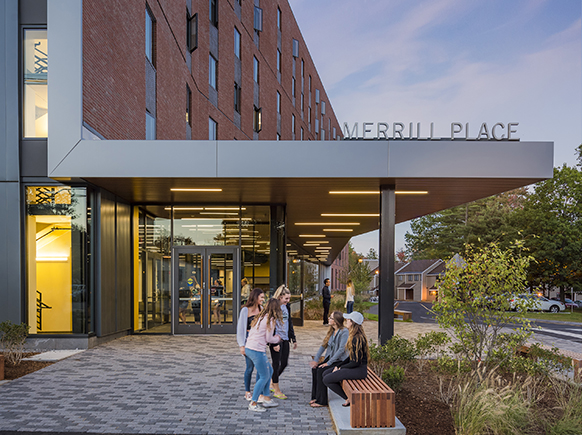Urban colleges and universities with competitive graduate programs are grappling with a prickly problem that is decades in the making: affordable housing—or more specifically, lack thereof. With cost of living on the rise in many U.S. urban markets, availability of affordable housing is becoming a key differentiator in prospective students’ school choice. So how can colleges and universities meet this need? The 198 McAllister Campus Housing project at UC Hastings College of the Law serves as a clear road map for other institutions to follow: “right sizing” the footprint of housing units, optimizing the ratio of unit types, and integrating key residential, academic, and community amenities into the building.
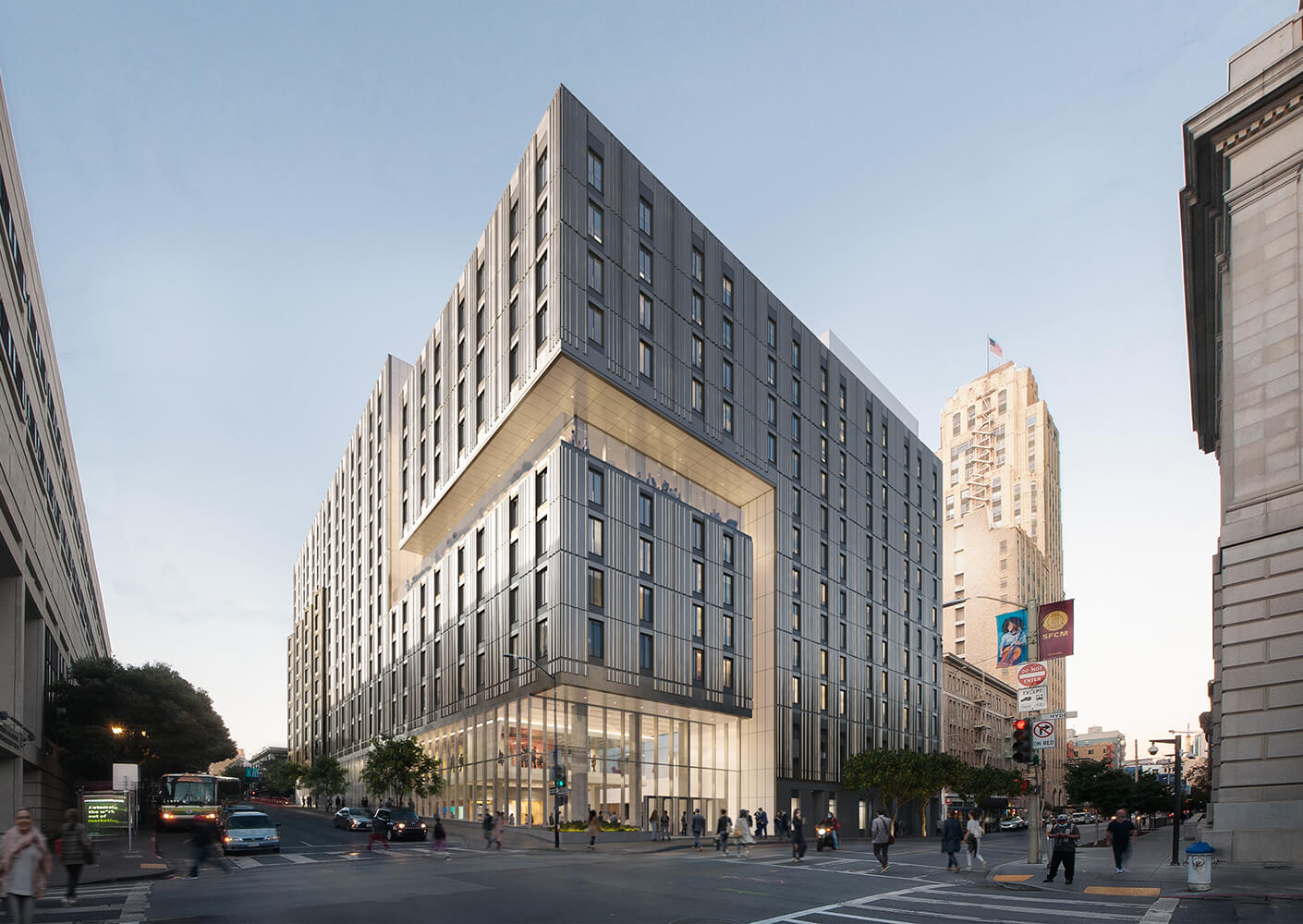
Like the urban markets in Boston, New York, and beyond, the higher education institutions in the San Francisco Bay Area have contributed to the region’s housing crisis by under providing housing for graduate students. Students compete with the general population for the limited housing stock, which further escalates housing prices. Without housing that meets students’ unique needs, Bay Area universities are losing prospective students to degree programs in other parts of the state or country. To address this challenge, UC Hastings developed a concept in pre-pandemic 2017 for a new type of academic village which will merge residential, academic, and community space to allow their campus to meet housing demand and provide added value for prospective students.
Integrated Within the Community
Slated for completion in 2023, the 198 McAllister Campus Housing project, which occupies an active block in San Francisco’s tenderloin neighborhood, embraces the university’s dense, urban location at the center of San Francisco by integrating the academic village with the neighborhood itself. The residential spaces of the 198 McAllister Campus Housing building are blended with academic and public space creating a true mixed-use community that differentiates UC Hastings Law from most local graduate campuses. Across the broader academic village, new and existing buildings across a few city blocks are visually linked by a consistent and complimentary architectural language, allowing the campus to emerge as a focal hub within the urban fabric where students easily connect with the surrounding community and related resources, while community-facing program spaces also serve the public.
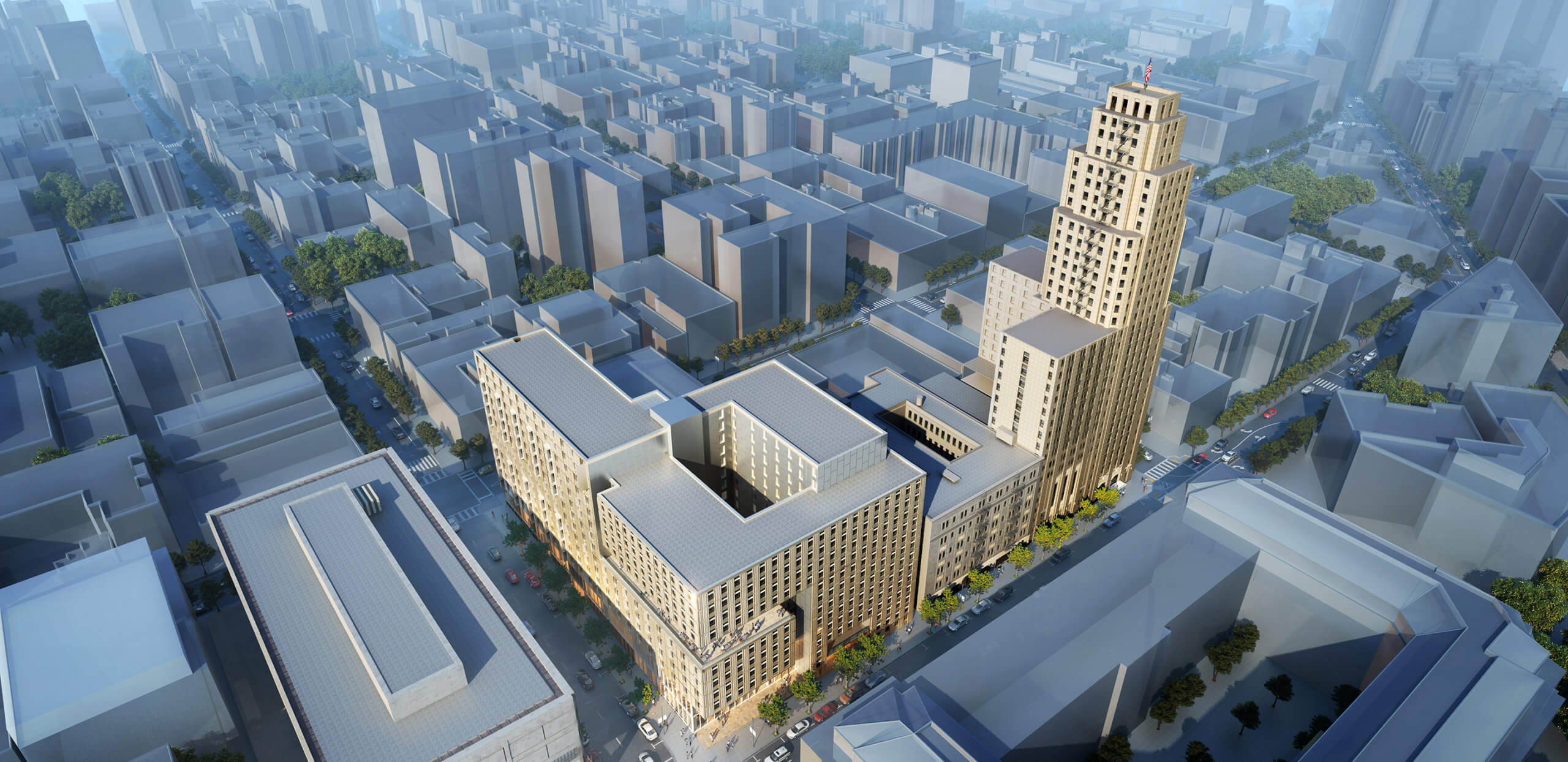
Establishing New Benchmarks
The real driver for meeting residential-life needs on campus is the residential unit types. Establishing the right target benchmarks for unit size and rent price point is critical to meeting student housing demand. Historically, graduate housing has been comparable in size and configuration to market rate apartments—and it followed that they were also priced similarly. However, given the increased demand for housing, the density required to meet demand and the cost of living in markets like the Bay Area, new benchmarks for graduate housing size, configuration, and price point is needed. This shift requires the creation of more flexible living space within a smaller area, delivered at an affordable and competitive price. As the market recovers from the pandemic disruption, these clear benchmarks for graduate housing must allow for higher value to students at a below market cost.
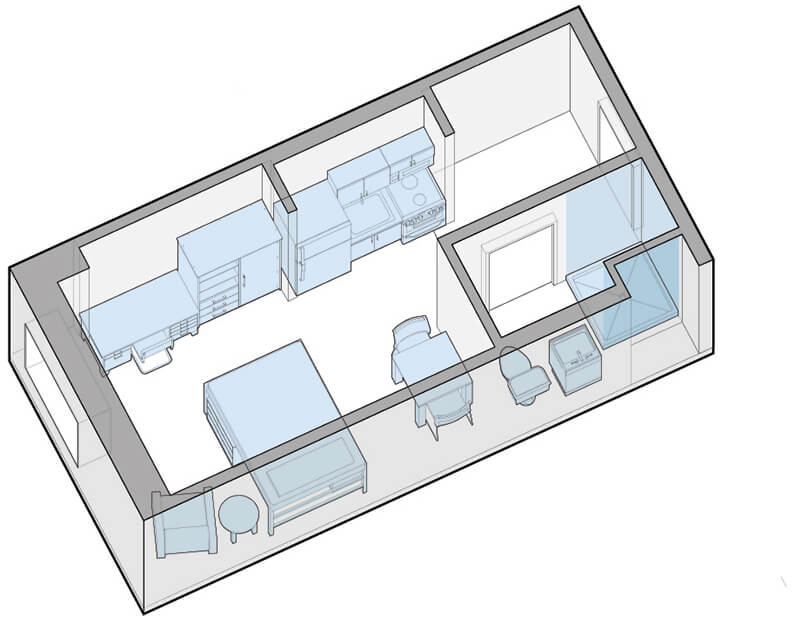
The most popular and prevalent unit types within this graduate housing market shift in are efficiency and studio units. Efficiency units have enough space for a bed, a desk, a wardrobe in the living area, full bathrooms, and kitchens with slightly smaller appliances. Studio units have similar layouts to Efficiencies, and they also typically include space for a small dining table in addition to the desk. To assist in the economic equation, these units have been scaled down to sizes that range between 280 – 350 gross square feet, providing code-minimum dimensions with some modest features. In the Bay Area, many efficiency units are considered “micro-units” given their even-smaller footprint. One- and two-bedroom units, at 470 and 670 gross square feet, are also more economically sized, while maintaining all of the features of an efficiency—albeit with slightly larger kitchen appliances and casework, along with a dedicated common living area. The pandemic has made it essential that students can effectively work remotely from their units, so a dedicated work area is consistent in all unit types.
Getting the Right Mix
Providing the right ratio of unit types is the key to balancing demand and providing affordable price points for students. UC Hastings, like many other graduate programs, is best served by efficiency and studio units, as most graduate students do not have a family and prefer not to have roommates. In the case of the 198 McAllister project, efficiency and studio prevalence in the overall unit mix provided additional units and rents to financially help the project pencil out, while their small sizes allow for more units to meet single occupancy student demand. Other urban markets or university programs may have different needs for their prospective student populations, so optimizing the unit mix to best suit those market price points and student needs is critical to meeting demand and attracting students to live in a mixed use campus community.
Amenity-Rich
The most notable feature of affordable graduate housing in urban markets is the inclusion of extensive and diverse resident-only amenities alongside academic and public space. Resident amenities like fitness rooms, study rooms, childcare space, bike storage, parking, and event space are becoming a typical part of the lower floors. In addition, these floors often merge campus functions, including classroom, lecture, and university event space, as well as retail and public event space that could be available to residents and non-residents alike. The additional amenity spaces and integration of academic and public programs is a huge value-add for students; it allows them to streamline their lives and daily activities within a thoughtfully designed community in close proximity to, or in the same building as, their dwelling unit. Similar projects across the country have identified fitness and wellness as the top priority for amenities in graduate student residences. This trend mirrors culture, lifestyle, and the importance of individual health.
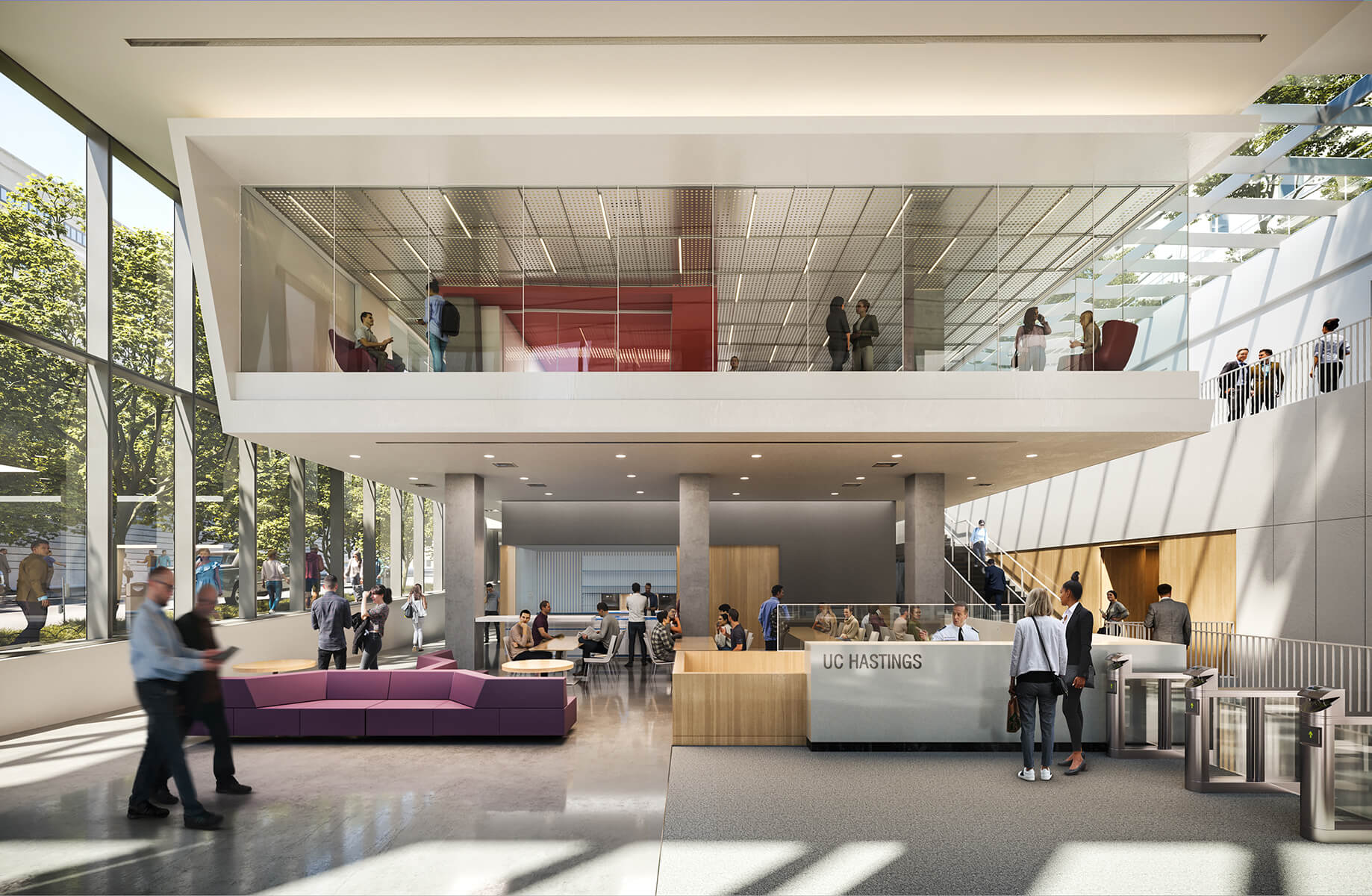
Leveraging Pandemic Lessons
In a fortuitous turn, much of the planning that informed the pre-pandemic design concepts for mixed-use graduate housing has, surprisingly, improved campus resilience for some campuses during the pandemic response. Essentially, these mixed-use buildings have become communities within themselves, which is advantageous for residents both during and after a pandemic, allowing essential access to campus services and amenities with a degree of in-person engagement outside of their residential units. Also, for urban colleges and universities that currently have a mix of residential and commuter students, the on-campus, mixed-use building type has proven an effective in keeping student populations engaged with their campus community and student resources during the pandemic. Many campuses that do not currently have these kinds of developments are now considering a similar mix of physical and programmatic framework to keep their students on campus and engaged with its community and resources in the case that a future need for prolonged shelter in place arises.
With denser populations returning to urban markets post-pandemic, the urban campus will be uniquely poised to be part of the solution to the housing crisis. As demand returns, rents will rise in turn, and many markets will find themselves in the position they were in at the start of 2020. The urban campus can meet that demand in an affordable way while also offering value through residential and campus amenities with thoughtful mixed-use development. The resulting spaces have the potential to build strong communities in their urban context, enriching campus and residential life while strengthening the bonds between campuses and the cities in which they reside.

